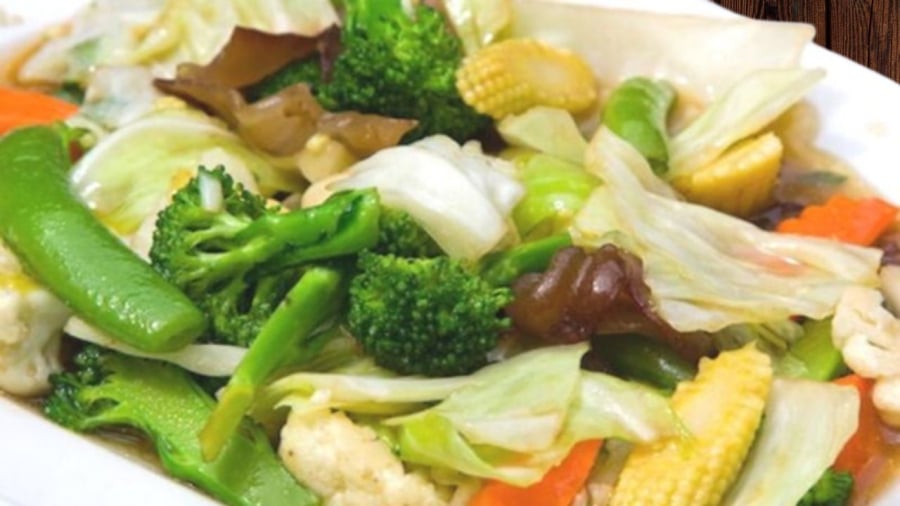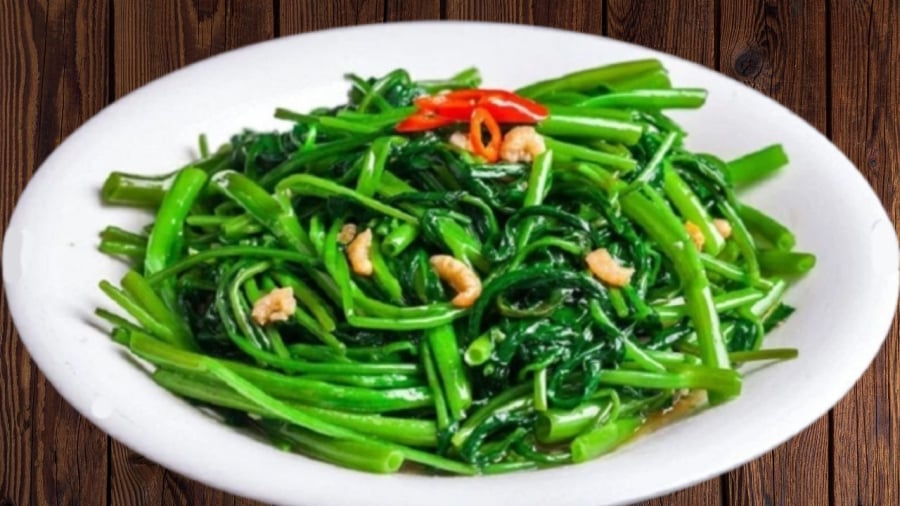Stir-fried vegetables are a common dish in many households, especially when the weather is cool and refreshing. Various types of vegetables such as water spinach, morning glory, Chinese cabbage, green beans, pumpkin leaves, chayote, and tall mustard are stir-fried to create a plate of fresh, green, and fragrant vegetables that make the meal much more enticing. However, many people find that their stir-fried vegetables turn out either too dark or too yellow and have a strong and bitter taste. This is due to improper cooking techniques and seasoning. To ensure that your plate of green vegetables stays vibrant and delicious, here are a few things to keep in mind:

Prepare some sesame oil
A secret tip from many restaurant chefs is to add a little sesame oil during the stir-frying process. Instead of using plain vegetable oil, add some sesame oil when the vegetables are almost cooked. The sesame oil will coat the vegetables and help them retain their green color for longer.
Ensure the vegetables are drained before stir-frying
If the vegetables are too wet, they will reduce the heat in the pan when added, causing them to stew and turn dark instead of staying green and crispy. Therefore, make sure to rinse the vegetables thoroughly and either let them air-dry or use your hands or a colander to remove excess water.
Prepare the sauce and seasoning ingredients in advance
If you’re using garlic and onions as seasoning, make sure to chop them beforehand. If you’re using a sauce for stir-frying, pour it into a small bowl in advance. Stir-frying requires quick and efficient movements, so if the vegetables are stewed for too long, they will become red and lose their flavor.

Use high heat
If the heat is too low and weak, the vegetables will stew in the pan and won’t turn green and crispy. Therefore, you should use high heat and choose a pan size that matches your stove and the amount of vegetables you are stir-frying. If you have a commercial gas stove, you can use a large pan and stir-fry a large batch of vegetables at once. However, if you have a home stove with a small pan, only stir-fry a moderate amount of vegetables, and divide them into multiple batches if needed. If you add too many vegetables to the pan and the heat is not sufficient, they will stew and lose their deliciousness.
The pan should be hot before adding the oil, but not too hot. Add the oil and let it spread evenly on the surface of the pan, then add the garlic and onions and stir-fry until fragrant before adding the vegetables.
Season with salt at the right time
Add the salt when the vegetables are almost cooked, as adding salt early will cause the vegetables to turn yellow. After seasoning, stir-fry for a quick 2 minutes. If you’re using a sauce for stir-frying, pour it around the edges of the pan instead of directly in the middle, as pouring it in the middle will reduce the heat of the pan and cause the vegetables to stew, resulting in them turning dark.
Stir-fry the vegetables that take longer to cook first
If you’re stir-frying a mix of vegetables that have different cooking times, stir-fry the ones that take longer to cook first before adding the ones that cook quickly. To make the dish visually appealing, you can stir-fry each type of vegetable separately and then mix them together.
Should you blanch the vegetables before stir-frying?
For some vegetables that tend to turn dark quickly, you can blanch them and then stir-fry. For example, for water spinach, Chinese cabbage, and tall mustard, you can blanch them and let them drain before stir-frying. This is especially helpful when you need to cook a large quantity of vegetables to ensure evenness and maintain the characteristic color of these specific vegetables.






































